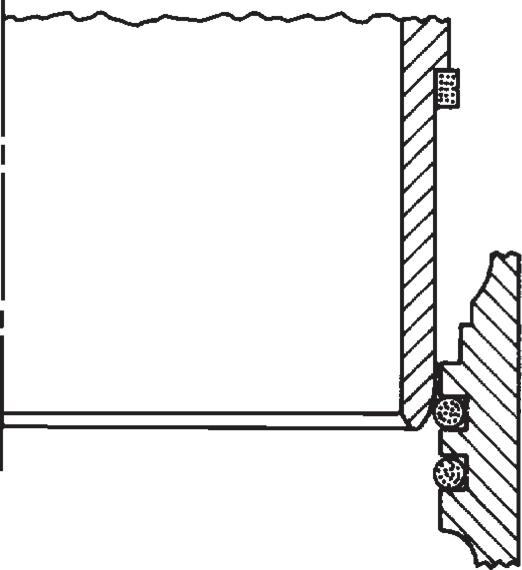
1 minute read
DISASSEMBLING THE LINERS
– Use tool n°7701388180 to measure height (A) of each liner at the 1,5,7 and 11 o'clock positions, seen from the back of the engine.
Important: Tighten the screws and washers to obtain a precise measurement of the liner height.
Values indicated: Height above the block .........................0,030-0,100 mm Maximum acceptable difference between the same or between 2 adjacent cylinders .............................0,05 mm – Remove the liner adjustment screws and washers fastened to the block.
Important: Do not mark the top of the piston.
– Before disassembly, number the liners and the pistons. Mark the front of the liners to reassemble them in the right direction.
Important: Always maintain the pistons and liners paired. The liners must be returned to their original bore.
– Pull out the liners from the cylinder block using tool (A) Nr.6005005504.
121hsm51
A
Fig. 21
A

121hsm52 Fig. 22
– Remove the O-rings (A) from the grooves of the cylinder blocks (B) and the bearing joint (C) of the liners (D). – Use a stiff bristle brush to clean inside the liners, under the flange and in the O-ring packing zones. Check there are no nicks nor burrs in the gasket locations.
Important: Do not clean the liners using gasoline nor solvents.
– Clean the inner wall of the liners. – Inspect the outer liner wall to check it is not pitted.
Important: If the liners are pitted, check the condition of the coolant.
121hsm53
C

D
B
A
Fig. 23
– Change the piston and liner if: – Pitting depth (A) is above or equal to half the thickness of the liner (C). – The erosion depth (B) is above equal to half the shoulder of the bearing gasket (D). Values indicated: Liner thicnkess..........................................6,23-6,89 mm Shoulder thickness ...................................2,02-2,29 mm – Check the inner wall of the liner.

A
B C
D
Deglazing cylinder liners
– Block the liner in a fixed holding device. – Use the flexible scraper of cylinder Nr. 7701388127 to deglaze the liners, in order to obtain hashing crossed at 45 °.
121hsm54 Fig. 24

121hsm55 Fig. 25







